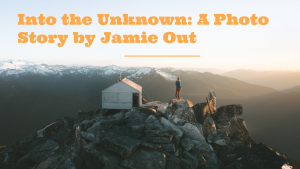 My first reaction after creating this online course is to give high praise and accolades to all of the teachers in the MET program that have created their online courses. The amount of hours that I put in to create a shortened 1 module course was already quite extensive, so my hat is off to those that curate such in depth courses. I’m also having only one person critique my course and that is nerve-racking enough, but having multiple students over the years going over your course with a fine toothed comb would be a bit intimidating as well.
My first reaction after creating this online course is to give high praise and accolades to all of the teachers in the MET program that have created their online courses. The amount of hours that I put in to create a shortened 1 module course was already quite extensive, so my hat is off to those that curate such in depth courses. I’m also having only one person critique my course and that is nerve-racking enough, but having multiple students over the years going over your course with a fine toothed comb would be a bit intimidating as well.
My course was designed to help beginner photographers learn the basics of landscape photography, starting with learning about their cameras. I provided weekly field assignments that they were to complete in order to get as much hands on experience as possible. I know when I was learning photography I found that practicing any new learning technique was vital to making it stick. Therefore my goal was to give short snippets of information and then have the students head outside to practice it (Chickering, 1996).
I also wanted to help build the classroom community environment and allow students to provide feedback to each other their work, so in their second field assignment on creating a photo story, I had them create a Google Slide presentation and had them turn on commenting on their presentation. I think that this will help provide a more collaborative feel to the course. It would also offer a safe place to discuss their work and get prompt feedback on areas to improve (Chickering, 1996). I found that the options within Google Classroom were limiting in that regard so I’m happy with Google Slides as an option.
For the digital story, I used Final Cut Pro to create the video. It’s is a more powerful version of iMovie essentially with a lot more options. As I was fairly new to the program, I didn’t really use much in the way of fancy titles or transitions, but I was happy with how visually appealing it was especially since my course is so heavily focused on improving photography.
Overall the process was great. It took me a while to think up a topic though and was happy I landed on “Telling a Story Through Your Photos.” If I was to do this again, I may try to add more titles or ways of making the video a bit more engaging. Overall though, I was pleased with the production and the programs that I used will be useful for me going forward as well.
As far as the LMS, Google Classroom has a lot of useful tools and is quite streamlined. I can totally see why teachers use it on a regular basis for their classes. My course on the other hand, would be more suited for Blackboard or Canvas because they both have more functionality when it comes to group discussions and posting individual work to separate forums. I found it difficult, without having to go outside of the Google Classroom LMS, to find ways for students to interact with others and share their photographs. Since my course is all about photography and very image based, it would have been much more valuable to have tools embedded into the LMS rather than students having to go elsewhere. Based on Bates and Poole’s SECTIONS model, I think that Google Classrooms is a very solid LMS. Where it lacks the most was in the interactions section. There is the option of commenting on posts, but the posts can easily get lost in the Stream, so finding alternatives would most likely be necessary. I would also argue that the organization options are quite limiting. When you make a new post it automatically goes to the top of the Stream feed. So if you were to make an announcement and 10 other students made a submission to the feed, your announcement might be missed. There are some work arounds, like making it a Topic on the left of the page, but that too could get cluttered if you had to do that for each thing you posted.
I wouldn’t hesitate to use Google Classroom in the future for an elementary or high school classroom, but if I had a chance to choose a different LMS for my course, I probably would. Overall this was a great learning experience and I feel a lot more capable of creating a course in the future that could be put to use.
Thanks for viewing.
Jamie
References
Bates, T. (2014). Choosing and using media in education: The SECTIONS model. In Teaching in digital age. Retrieved from https://opentextbc.ca/teachinginadigitalage/part/9-pedagogical-differences-between-media/
Chickering, A. W., & Ehrmann, S., C. (1996). Implementing the seven principles: Technology as lever. American Association for Higher Education Bulletin, 49(2), 3-6. Retrieved from http://www.aahea.org/articles/sevenprinciples.htm